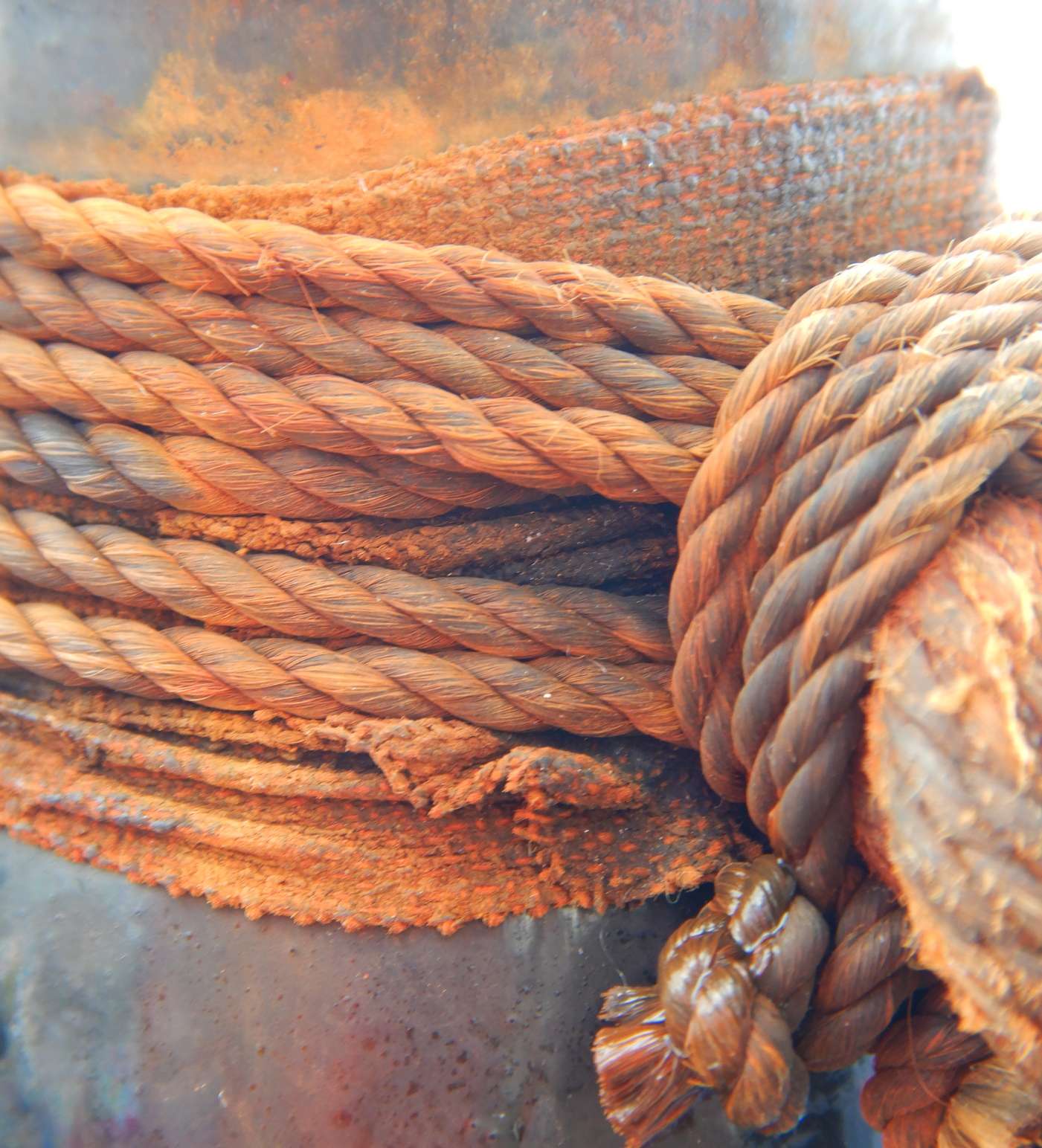Programs Blog
The Ties that Bind

Ship’s Log
Current Position
21°23.830’S x 179°17.994’W
Ship’s Heading and Speed
330
Weather
Sunny, light wind, with a cool breeze
Perched upon the narrow wooden platform, partially up the foremast, I secured myself to the shrouds with my black and gold harness. I dangled my toes over the edge, 40 feet above the surface of the ocean. My harness straps pinched my thighs as I scooted closer to overcautiously grasp the sturdy rigging. I had climbed up the mast to watch the islands of Tongatapu pass by as we sailed onto Fiji. While on the hopeful lookout for whales, I noticed the small bits of string and wire that were holding my seat together. How miniscule. How thin. And yet how undeniably strong they must be. Looking closer, I noticed the elegant needlework securing the not-so-gently worn leather that had been lovingly weathered over the Seamans near 20-year lifespan. Wire was wrapped around bolts for double security. Thin line was woven through the handmade leather covers in, out, over, and around metal posts. These are the “ties that bind.”
When most of us think of sail boats, we think of the macro-scale: we picture the large hulls, billowing sails, the oversized helm, gumby-like orange survival suits, and bulky yellow foulies. Our minds do not typically conjure images of the miniature elements upon which the boat relies to stay afloat, let alone that our lives depend. Now that I am aware of the existence of this micro-system, it’s all I can see.
Nuts and bolts. Wires and strings. Somehow all intricately molded together. Pegs in the crosshairs of the tables that allow us to gimbal them while underway (allowing them to sway freely so that our food actually remains parallel to the earth’s surface while the table wobbles to and fro making us chase our plates in an endless spectacle). The small latches that hold doors in place despite the wildest efforts of the sea to force them open. The
teeny little gadgets in the engine room, and the incrementally smaller spaces one crawls through to read them. I put most of my faith in the miniature pulley system that holds my bed in place. It not only securely suspends me above my bunkmate, but in times of need (on a heavy starboard tack), it adjusts to an angle that ensures I don’t roll out onto the floor.
Without all these miniature devises, and the micro-ecosystems in which they live, the boat would be a floating obstacle course of flying debris, unwieldy doors, and hazardous materials. I’d like to take a brief moment here to thank the people who make and maintain all these little mini bits and pieces that tend to go unnoticed. After all, it is the little things that matter most.
– Emily B. Hite, Chief Anthropologist, University of Colorado Boulder
Recent Posts from the Ships
- Ocean Classroom 2024-A collaborative high school program with Proctor Academy
- Collaborations and Long-term Commitments: SEA’s Caribbean Reef Program Sets a Course for Coastal Programs that Compliment Shipboard Experiences.
- Sea Education Association students prepare for life underway using state of the art nautical simulation from Wartsila Corporation.
- SEA Writer 2022, Magazines From the Summer SEA Quest Students
- Technology@SEA: Upgrades Allow Insight into Ocean Depths
Programs
- Gap Year
- Ocean Exploration
- High School
- Science at SEA
- SEA Expedition
- SEAScape
- Pre-College
- Proctor Ocean Classroom
- Protecting the Phoenix Islands
- SPICE
- Stanford@SEA
- Undergraduate
- Climate and Society
- Climate Change and Coastal Resilience
- Coral Reef Conservation
- Marine Biodiversity and Conservation
- MBL
- Ocean Exploration: Plastics
- Ocean Policy: Marine Protected Areas
- Oceans and Climate
- Pacific Reef Expedition
- The Global Ocean: Hawai'i
- The Global Ocean: New Zealand